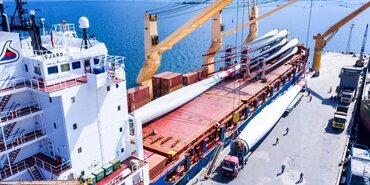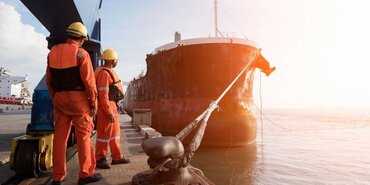TT Talk - Consideration of emergencies

When things go wrong, an incident occurs, there inevitably is a response. The degree of severity will generally be commensurate with the diligence in creating, documenting, reviewing, testing and communicating a response plan - hopefully.
An ICHCA International briefing pamphlet entitled "Emergency Plans", published in revised form a decade ago, identified a number of events that could necessitate activating an emergency plan, and included injuries, damage, fire or explosion, spillage or release of toxic or flammable substances (liquid or gas), collisions and extreme meteorological conditions. The thinking in relation to this last aspect was incorporated in the joint TT Club and ICHCA publication "Windstorm II".
But does this list cover all the eventualities of our rapidly changing world? In recent times some of the most notable news items have covered such events as mass shootings, cyber-attacks and bombings.
An ICHCA member has recently experienced a shooting where one port operative at a port training centre shot another (the latter is still in hospital recovering). Those witnessing the incident were traumatised and some needed counselling. And when was the last time a bomb alert routine was practiced in your facility?
One thing is certain, as has been seen from recent incidents in ports where ships have collided with quay cranes or a container has gone on fire: the media, especially the social version, will have images out there before any corporate response can be formulated. So that is another aspect that must be considered - there is a whole new, less predictable media world to handle.
"there is a whole new, less predictable media world to handle"
It would be false security to read a list of events (as above) and conclude that none apply; these should be seen as potential use cases for the necessary planning process for how to respond to an incident. On this basis alone, the ICHCA publication still offers sound advice in this respect and forms a robust basis for developing a plan.
It requires teamwork
Depending on the scale of the event, it is quite likely that the response to any incident will be "multi-agency". A serious incident involving injury or fatality, for example, will almost certainly involve police and ambulance services, and possibly fire or other rescue services.
Larger incidents, such as fires and explosions, ashore or afloat, will involve a wider group of organisations, including perhaps, the Port or Harbour Authority, Maritime Administrations, various national or international agencies, utility companies, neighbouring or tenant businesses, and contractors. And of course, it is even more likely that traditional and social media will be involved. TT Club estimates there is a major ship fire every 60 days or so; most of these occur at sea, but what if it occurred whilst the ship was alongside in your port or terminal? Are you prepared for such an event?
Complex incidents require a number of agencies to work together. All the parties involved in the incident response need information and co-ordination. Many incident responses have not been ideal and led to further, longer lasting consequences. What can cause a response to be inadequate? Here are some indicators:
- Lack of planning in the first place
- Un-structured response arrangements
- Lack of definition of the individual in charge (incident controller) for each type of incident
- Lack of clarity of who needs to be informed/involved
- Lack of training in preparedness
- Lack of drills in testing out plans
- Lack of co-ordination with outside agencies
- Lack of depth of knowledge
- Not investigating what might be "unknowns"
Drill, evaluate, amend, drill
During recent ICHCA audit visits to ports and terminals, it has become apparent that some facilities have only made rudimentary preparations, some none at all. It may be obvious that account needs to be taken of all operational aspects, such as the variety of dangerous goods handled or control of outside and internal traffic flows. But in one instance, the terminal manager admitted that in 40 years of operation there had never been a practice drill with the fire and emergency services involved. Furthermore, the facility was adjacent to a housing estate with a primary school. This demonstrates issues of local planning, licensing and the application of local and national rules and guidance. So, practice and drills in a multi-agency setting are absolutely necessary - and are mandatory in many jurisdictions across the globe.
Information exchange is key. Emerging portals offer interesting capabilities to draw together information that can be incorporated into emergency plans. For example, ICHCA is a member of the SAURON Project community, aiming to link all physical and electronic sources of information ports and terminals have, including cameras and sensors, to present a real time understanding to assist in response to an incident.
So, emergency plans and preparedness have to move with the times. The ICHCA publication provides a relevant base, but planning needs to take account of changes in technology and threat types (including cyber or drone incidents), as well as meshing with the entirety of the physical and societal environments.
The old adage still applies: "Fail to plan - plan to fail".
We gratefully acknowledge the assistance in the preparation of this article of Captain R W A Brough OBE, Head of ICHCA International
We hope that you have found the above interesting. If you would like further information, or have any comments, please email us, or take this opportunity to forward to any colleagues who you may feel would be interested.
We look forward to hearing from you.
Peregrine Storrs-Fox
Risk Management Director, TT Club
- Author
- Staff Author
- Date
- 14/05/2019





